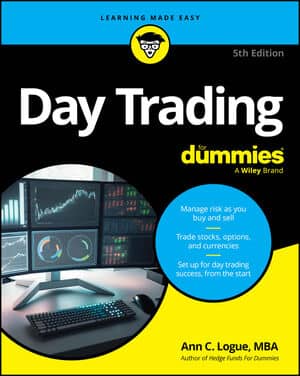Over the years, day traders have developed many different ways to manage their money. Most strategies are based on different statistical probability theories, and some share commonalities with casino gambling. The underlying idea is that you should never place all of your money in a single trade, but rather put in an amount that is appropriate given the level of volatility. Otherwise, you risk losing everything.
Calculating position size under many of these formulas is tricky stuff. That’s why brokerage firms and trading software packages often include money management calculators.
Martingale
The martingale style of money management is common with serious casino gamblers, and many traders apply it as well. It’s designed to improve the amount of money you can earn in a game that has even odds. Most casino odds favor the house. Day trading, on the other hand, is a zero-sum game, especially in the options and futures markets. This means that for every winner, there is a loser, so the odds of any one trade being successful are even. The martingale system is designed to work in any market where the odds are even or in your favor.
Under the martingale strategy, you start with a set amount per trade, say $2,000. If your trade succeeds, you trade another $2,000. If your trade loses, you double your next order (after you close or limit the first trade) so that you can win back your loss. (You may have heard gamblers talk about doubling down? Well, this is what they are doing.)
Under the martingale system, you will always come out ahead as long as you have an infinite amount of money to trade. The problem is that you can run out of money before you have a trade that works. The market, on the other hand, has almost infinite resources because of the huge volume of participants coming and going all over the world. That means that you have an enormous disadvantage. As long as you have a disadvantage, thoughtful money management is critical.
Monte Carlo simulation
If you have the programming expertise or buy the right software, you can run what’s called a Monte Carlo simulation. In this, you enter in your risk and return parameters and your account value, let the program run, and it returns the optimal trade size. The system isn't perfect — it can’t incorporate every market situation that you’ll face, and it has the fractional trade problem that the other systems do. But it has one big advantage: It can incorporate random changes in the markets in ways that simpler money management models cannot.
Monte Carlo simulation is not a do-it-yourself project unless you have extensive experience creating these programs. If you're interested, you need to find a suitable program. Two options are offered by AnalyCorp and Oracle Crystal Ball. Others are out there as well.

